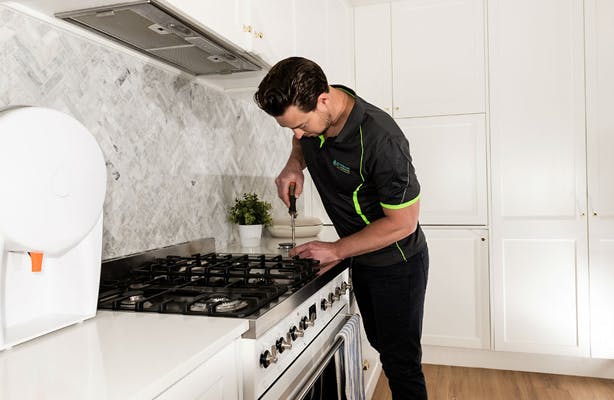Property Management
2025 Rental Property Inspection Guide: Protect Your Investment Today
Last Updated Sep 9, 2025


Table Of Contents
- Why Rental Property Inspections Matter
- What Legal Basics Should Every Landlord Know?
- Building a Smart Inspection Checklist
- What is the Right Way to Schedule Inspections?
- Walking Through the Property: A Step-by-Step Approach
- Documenting and Acting on Findings
- How Belong Does Your Property Inspection
- Final Thoughts
- Frequently Asked Questions
Property inspections are the backbone of rental success, they protect your equity, keep tenants accountable, prevent costly disputes, and ensure your rental stays profitable. With Belong’s app and concierge team, inspections become a seamless part of caring for your home.
Why Rental Property Inspections Matter
A rental property isn’t just four walls, it’s an asset that can either grow in value or quickly deteriorate without proper oversight. Regular inspections create a clear, documented record of a property’s condition, protecting both landlords and tenants.
Here’s why inspections aren’t optional:
- Protect your equity. Small leaks, pests, or HVAC issues caught early can save thousands in future repairs.
- Prevent disputes. A documented baseline at move-in provides proof during deposit disputes or insurance claims.
- Meet legal requirements. Many jurisdictions mandate periodic inspections to ensure compliance with local codes.
- Reduce vacancy. Properties kept in strong condition rent faster, often reducing downtime by up to 40%.
Skipping inspections can lead to hidden damage, think rotting subfloors from unnoticed water leaks or wiring problems that spark fires. On the flip side, a disciplined inspection routine gives you confidence that your property remains safe, attractive, and income-generating.
What Legal Basics Should Every Landlord Know?
Property inspections live at the intersection of two rights:
- The landlord’s right of entry: in most states, you may enter with proper written notice, often 48 hours in advance.
- The tenant’s right to privacy: tenants must feel secure in their home, which is why written notice (not just a call or text) is legally required.
This balance is critical. Handle entry improperly, and you risk violating privacy laws or straining the landlord-tenant relationship. Handle it correctly, and inspections become a collaborative, transparent process.
Building a Smart Inspection Checklist
A strong inspection is only as good as its checklist. A reusable apartment inspection checklist helps you stay consistent across multiple properties and tenants. It should be broken into three main categories:
- Exterior: roof, gutters, siding, landscaping, driveway, fences, locks, and entry doors.
- Interior: walls, ceilings, floors, cabinets, windows, and doors. Look for cracks, stains, or wear.
- Systems: HVAC filters, plumbing, smoke/CO detectors, electrical panels, and water heater.
When evaluating, use a simple scale: Good / Needs Maintenance / Poor. This ensures consistency, even across different inspectors or visits.
And don’t just rely on your eyes. A moisture meter can uncover leaks hiding inside walls. It’s also recommended to use a smartphone camera with a timestamp that creates proof that can’t be disputed later.
What is the Right Way to Schedule Inspections?
Timing matters more than many landlords realize. Ideally:
- Move-in inspection: Conducted at least 7 days before lease start, allowing time for repairs or touch-ups.
- Routine inspections: Every 3 to 6 months. Frequent enough to catch issues, but not so often that tenants feel harassed.
- Move-out inspection: Completed immediately after vacancy, before refunding deposits.
Always give written notice, and specify not only the date but also a clear time window (e.g., 10am-12pm). Confirm acknowledgment with your tenant so there’s a record of compliance.
Walking Through the Property: A Step-by-Step Approach
When the day arrives, a methodical room-by-room process ensures no surprises later. For each space:
- Visual check: Look for stains on ceilings, cracks in drywall, or signs of pests.
- Functional test: Flip every switch, run every faucet, and open every cabinet.
- Documentation: Snap photos, add notes, and apply your rating.
Don’t rush. Even a 20-minute inspection can reveal costly issues if done carefully. A leaky showerhead might seem minor, but left unchecked, it could contribute to mold, warped wood, or higher water bills.
Quick Tip: Use your phone’s grid lines when taking photos. Straight, level shots make side-by-side comparisons far easier at move-out.
Documenting and Acting on Findings
An inspection isn’t complete until it’s properly documented and signed. Both landlord and tenant should acknowledge the report, whether on paper or digitally, to make it legally binding.
From there, it’s about action:
- Minor issues: Schedule repairs within a week to show responsiveness.
- Major issues: Provide a written notice to remedy within the legal timeframe, usually 5 to 10 days.
- Updates: Add findings to your property’s condition log for future reference.
Neglecting to act on findings can hurt relationships with tenants and even expose you to liability if unresolved issues become safety hazards.
How Belong Does Your Property Inspection
At Belong, we treat inspections not as a box to check, but as a cornerstone of responsible property care. At Belong, we have built our proprietary inspection app that our inspectors use to document the condition of the home. That’s why our process is complimentary for homeowners who partner with us.
We do inspections for two main reasons:
- Accountability. We document the home’s full condition so tenants are held responsible for returning it in the same state they received it. This protects your property from avoidable damage.
- Accurate pricing. A detailed inspection gives us the information needed to recommend the most competitive rental price for your home, maximizing income while minimizing vacancy.
After the inspection, we’ll schedule a call with you to review results. During that call, we’ll:
- Share the findings, supported by photos and notes.
- Align on a rental listing price.
- Arrange for any necessary pre-listing repairs, with a nominal deposit to get things moving.
This means that from the moment the inspection is complete, we’re already setting you up to minimize downtime and get your property listed the same day.
Final Thoughts
Rental property inspections are more than just a landlord chore, they’re a strategy for protecting equity, maintaining trust, and keeping rent flowing without interruption. Whether you use your own checklist or partner with Belong, make inspections a cornerstone of your rental management plan.
With Belong’s complimentary inspections and streamlined process, every homeowner gets peace of mind that their property is cared for, tenants are accountable, and vacancies are minimized.
Frequently Asked Questions
1. How often should I inspect my rental property?
Inspections should be done before move-in, every 3 to 6 months during tenancy, and at move-out. This cadence ensures you catch issues early while respecting tenant privacy.
2. What’s the biggest risk of skipping inspections?
Neglected inspections can lead to costly hidden damage, prolonged vacancies, and weakened legal standing in disputes. In worst cases, landlords end up covering repairs that could have been prevented.
3. Can I do inspections myself, or should I hire a professional?
You can absolutely conduct them yourself with a checklist, but a professional or a trusted partner like Belong adds expertise, consistency, and technology (like timestamped reports and e-signatures) that make documentation stronger.
4. How do inspections affect tenant relationships?
When handled properly—with notice, transparency, and follow-through—inspections build trust. Tenants see that you care about maintaining a safe, well-kept property, which often translates to longer, more stable tenancies.
About The Author
Eric Vandekerkhove
Marketing Manager
Join me as I share insights drawn from years of hands-on experience. Whether it’s navigating the latest trends in real estate, sharing practical tips for property management, or discussing the nuances of building lasting relationships with clients, my goal is to offer guidance that’s as practical as it is inspiring.




